

 TERRY SMITH explains the history of this 1950s icon.
TERRY SMITH explains the history of this 1950s icon.
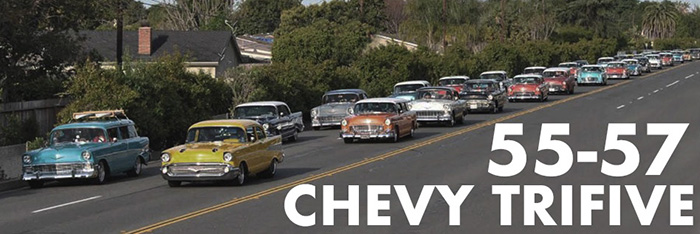
Some of you might be thinking 'what is a tri-five Chevy?' Well, as far as American cars are concerned they are considered an icon both in the US and the rest of the world. Some American car names might seem more familiar to you such as the Corvette, Mustang or Thunderbird, but on their looks nothing sums up the US in the 1950s than a tri-five Chevrolet; so called because their production was spread over the years of 1955 to 1957. Although they are all basically the same shape, they had a different 'face' and rear lights which differentiates each model year. The cars also debuted Chevrolet's famed and much produced small block V8, which overnight replaced the Ford V8 Flathead as the choice of hotrodders and professional circuit racers. It's very possible that more races have been won with a Chevy small-block than with any other engine.
When introduced in 1955, the car had a simple eggbox grill which was supposed to emulate those fitted to Ferraris of the same period, and neat little rear lights. It came in three trim levels, from the basic 150 model through the 210 and finally the top spec 'Bel Air', which is a name you may recognise and many people use it for all of the models. To be honest, in their day the models did not differ too much except for mostly exterior trim, with more chrome fitted as the customer spent more money - which they did, making the 1956 and 1956 Chevrolet the best-selling car in the US. In those days, companies only made one shape of car but in various types and the tri-five's came in the following configurations; 2-door sedan, 2–door hardtop (coupe), 2-door convertible, 2-door Nomad Sport Wagon, 2–door station wagon, and a 2–door sedan delivery van, as well as a 4–door sedan, 4–door hardtop coupe and a 4-door station wagon, with a choice of trim levels on most body styles that gave the customer a huge choice of models, which continued unchanged in 1956 and 1957. What did change in those years was the front and rear bodywork, which was changed to breathe freshness into the design. By keeping the same chassis, along with the overall body-shell including the bulkhead, roof, doors and boot lid, the designers could re-shape the bolt-on front wings, bonnet and front-end details such as the grill and bumpers. The only other change was the complete rear ¾ panels, which differed in wheel-arch shape and how the lights were mounted. While the 1956 model was a pretty car, the hot rodders and most collectors prefer either the 1955 and 57 models and tens of thousands of these still survive today, with the convertible models and the hardtop coupes, especially in Bel Air guise, being the most desirable.
There are companies in the US who make a living out of re-manufacturing every part for these cars, and there are many owners' groups here in the UK. There is even a drag race series called the Tri-Five Shootout, that appears at classic drag race meetings at Santa Pod in Northamptonshire. I have competed in the later on a few occasions driving my own street-registered 1957 210 2-door sedan to these events. My car, which I have owned for over 20 years, has very little left on it that was made all those years ago - although the engine block is no spring chicken itself, being 5.7 litre motor out of a 1970 Camaro! The most asked question, apart from the pointless one about miles per gallon, happens to be 'Is that a Bel Air?' and after years of trying to explain the difference in trim, I now just reply 'Yes, it is'.
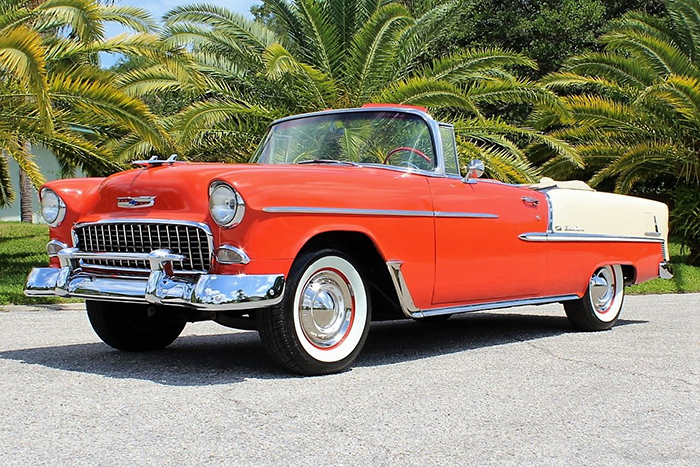
This is where the legend began: the 1955 model Chevrolet was introduced in October of 1954 and in the first year of production they sold almost 1.8 million of all versions. This is the desirable Bel Air convertible, of which 42,000 were produced.
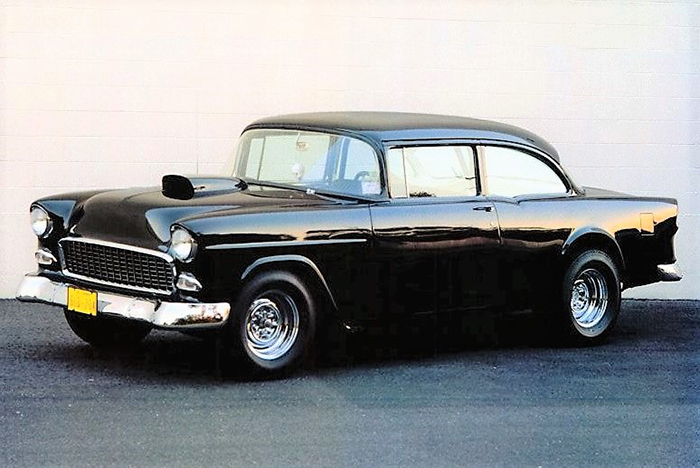
This Black '55 appeared in the cult movie American Graffiti, driven by a very young Harrison Ford. The car had starred previously in the film Two-lane Blacktop, driven by James Taylor and Brian Wilson (from The Beach Boys). In that film it was finished in grey primer and ran huge rear slick tyres on alloy rims.
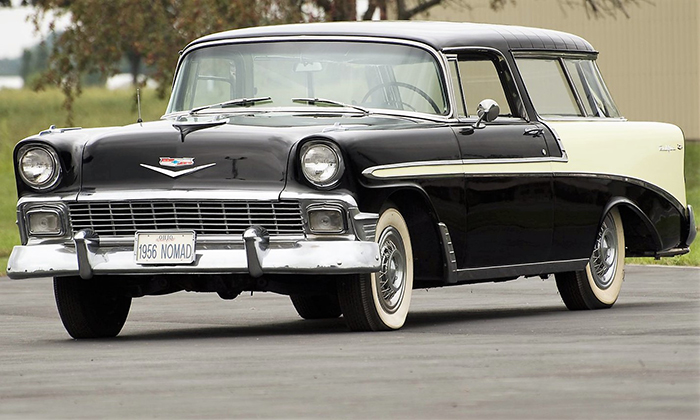
1956 was another stellar year for Chevrolet, with total sales of 1.6 million - again pushing Ford into second place in the sales race. The grill, bonnet, front and rear wings were changed for this year not only on this rare Nomad, but on all 1956 models.
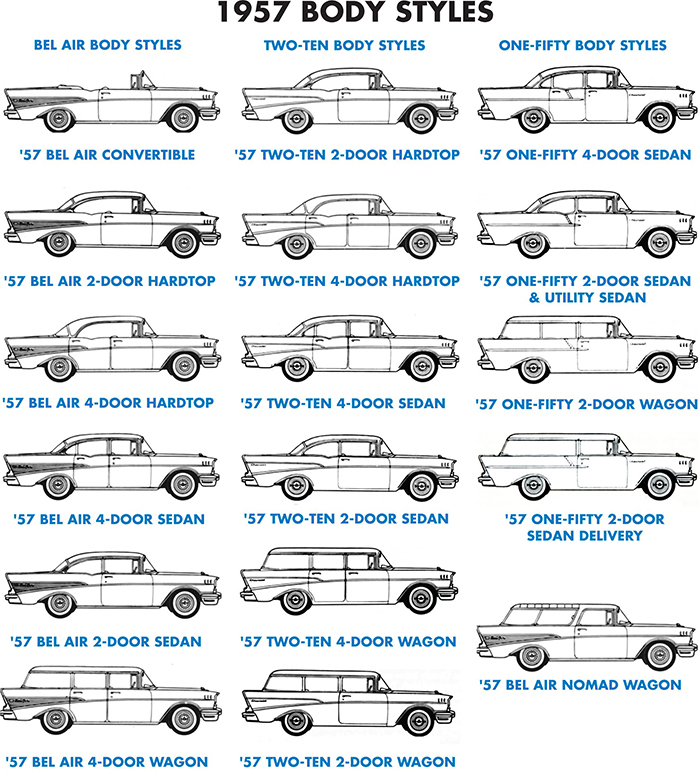
A buyer's guide to the 1957 Chevy, showing the different body styles and trim options. Note: the top end Convertibles and Nomads only came in the Bel Air trim option.
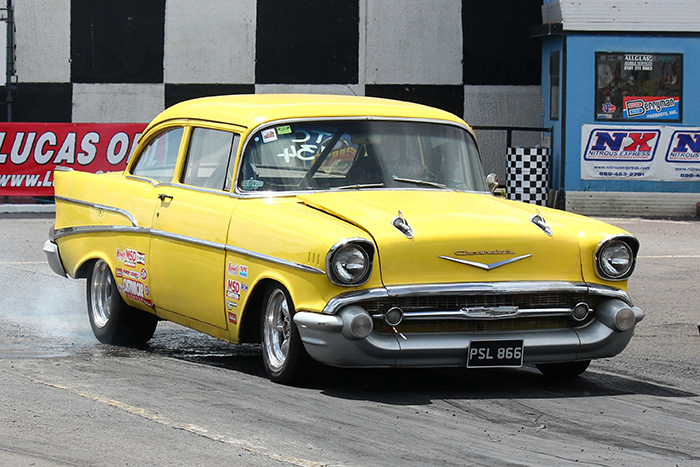
I have owned this 1957, 210 2-door sedan since 2000, and it is shown here approaching the line at the 2017 Nostalgia Nationals. Note that Chevrolet again changed the front of their cars for that year to perhaps its most iconic and recognised.
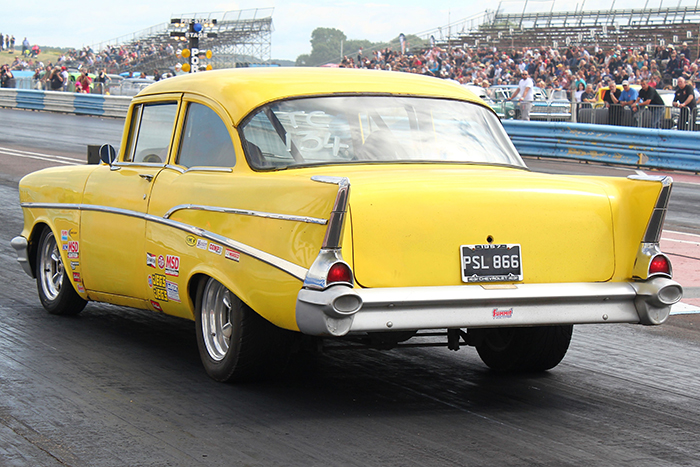
As I wait to launch down the drag strip, you can see the short rear 'fins' on the '57, at this time some companies, (like Cadillac and Plymouth) took their fins to the extreme! Ironically, Chevy just missed out on beating Ford again that year, possibly the buyers preferring the more subtle Ford design of that year.
The cars of course have been produced in model form from almost their introduction 66 years ago, and I can't see their popularity ever waning. Currently, Oxford Diecast offer a 1957 Nomad in their HO range of diecast models.